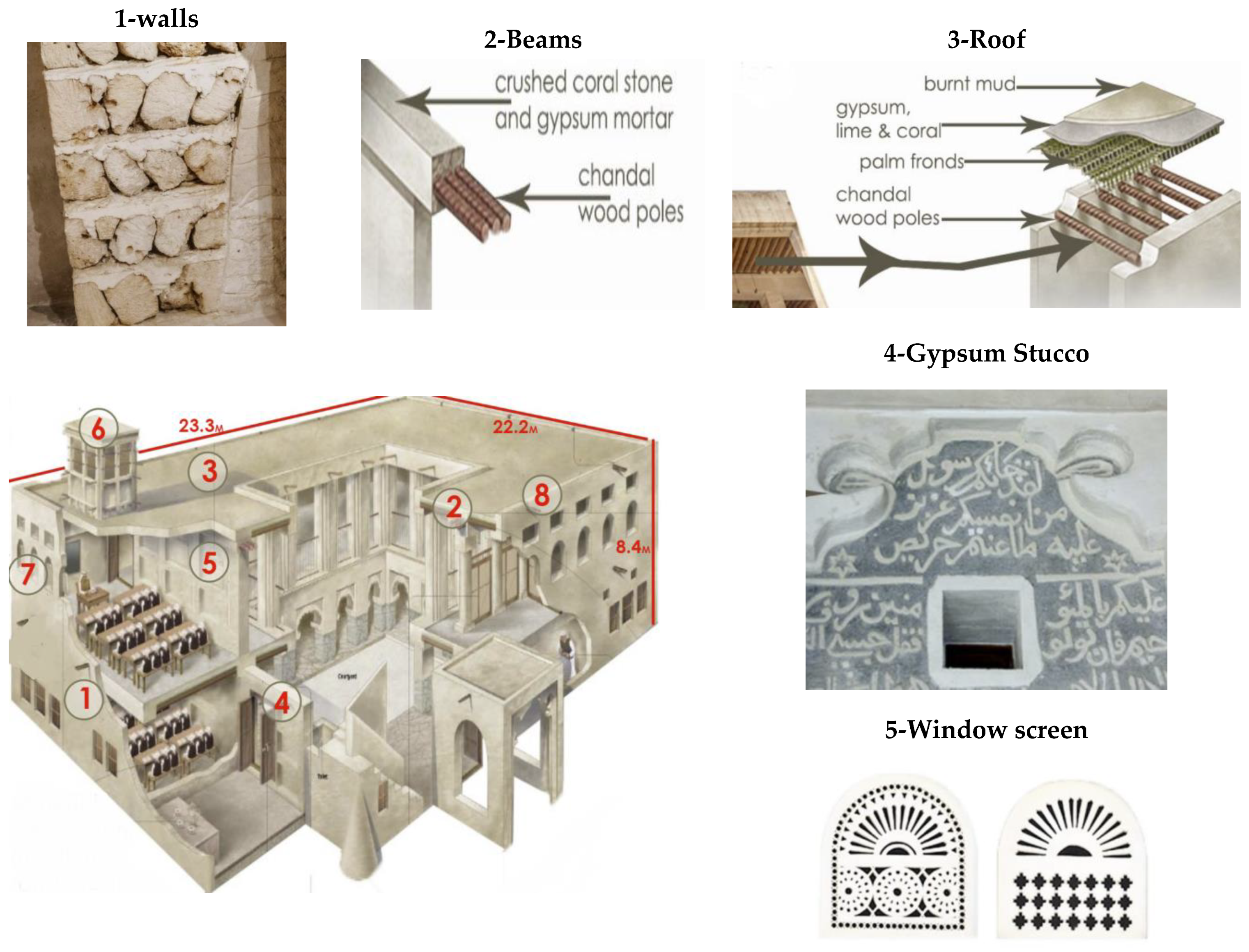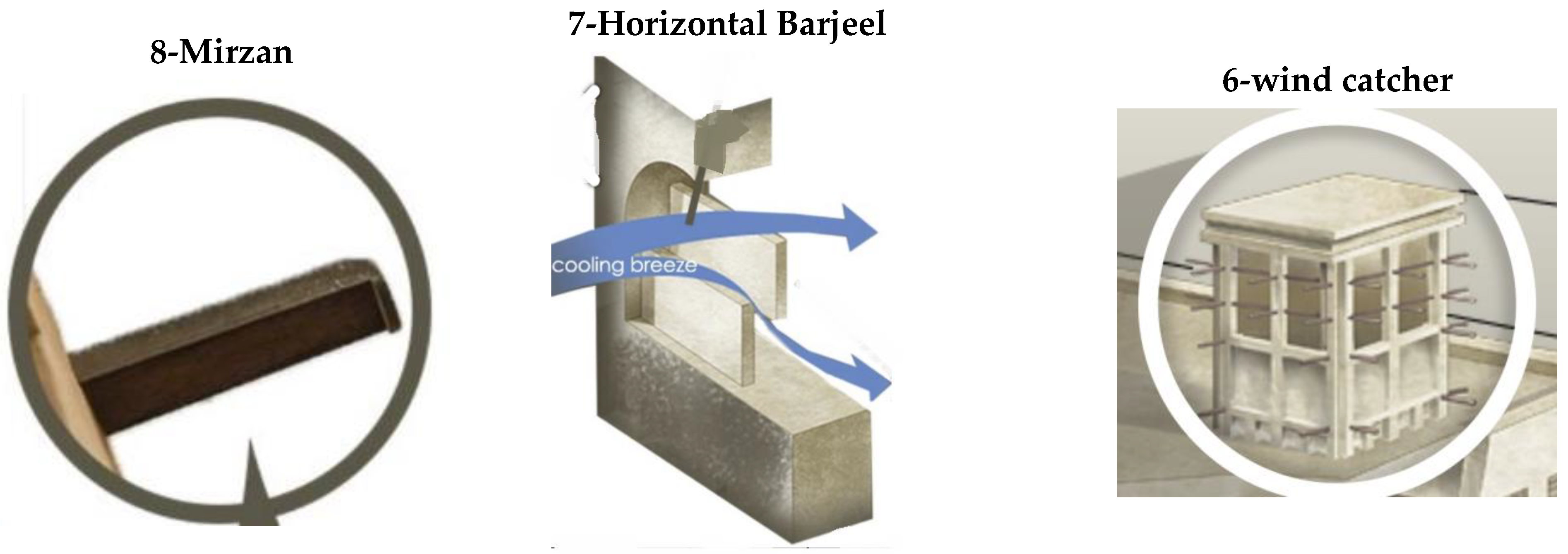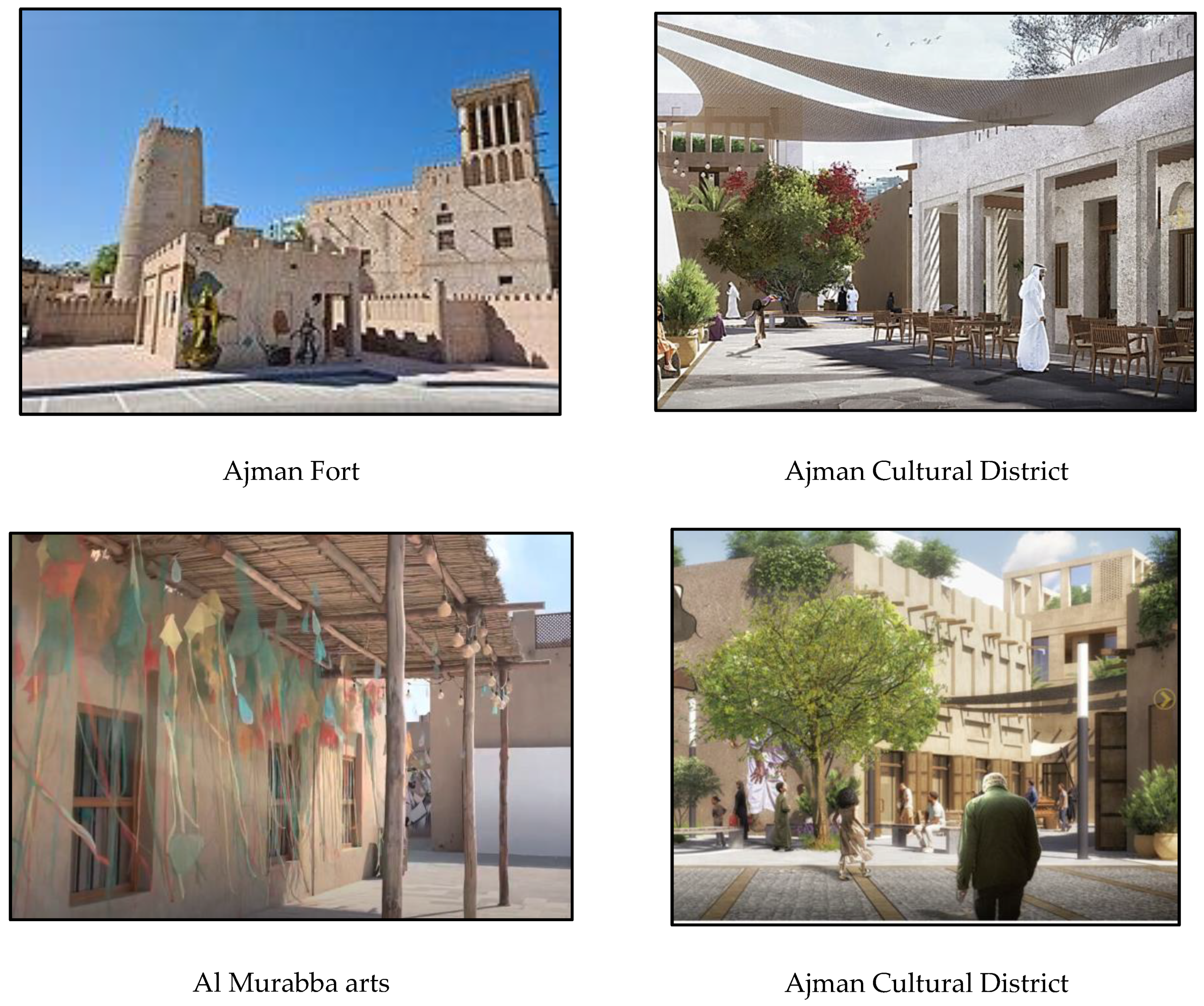From Heritage to Sustainability: The Future of the Past in the Hot Arid Climate of the UAE
Abstract
1. Introduction and Literature Review
1.1. Importance of Heritage Preservation
- Salameh et al. [3] evaluated a singular case of heritage preservation at the architectural and urban scales in the city of Nablus, Palestine. According to the investigation, traditional passive design solutions have a number of advantages over contemporary ones. It was discovered that a traditional building that had been preserved had better thermal performance, making it more sustainable than a modern building performing the same function. Moreover, they added that the conservation of the old city supported the social and the economic pillars of sustainability.
- Cantatore and Fatiguso [4] outlined a comprehensive management strategy for managing energy retrofit changes and preservation measures in historic districts. They used “resilience thinking”. Their recommended technique followed the customary path of cultural heritage retrofitting. Furthermore, they outlined a structural procedure that intended to recognize and assess the adaptation of traditional constructed structures to climate change and location experience. Additionally, they sought to identify serious energy crises brought on by historical building changes or exposure to the dangers of climate change.
- Another study was conducted by Ulu and Durmuş Arsan [5] at the neighborhood level and involved old and modern residential buildings in a historic urban fabric in the Mediterranean climate. The study revealed that the implementations of thermal retrofitting are essential for preserving the functional sustainability of historic structures. Moreover, they confirmed the ability of these structures in enhancing the thermal performance and comfort of their occupants, while supporting the sense of cultural and social belonging.
- Ali Timur, Basaran and Ipekoglu [6] examined the thermal behavior of traditional houses with exterior halls—a common historical building type in Anatolia, Turkey— to determine the possible benefits of potential thermal interventions. Their findings showed that the control of air leakage, adding secondary glazing to windows, thermal insulation within floor assemblies, and suggesting transparent circulation corridors, all resulted in significant energy improvements. Thus, making applications of thermal interventions is a useful conservation tool.
- Paschoalin and Isaacs [7] reviewed comprehensive international and New Zealand guidelines for historic and heritage building renovation. They found that in New Zealand, the abundance of heritage and historic buildings in provincial towns’ centers is a growing problem. They added that this requires action to address the major changes to the building codes, as these heritage buildings can be made more sustainable and resistant to climate change through upgrading and adaptive reuse.
- However, there is a critical gap that requires immediate closure, which is the absence of national comprehensive guidelines regarding the challenge of reducing environmental impact by the heritage conservation, while maintaining the heritage values. Historic structures require special care because they are interaction systems with cultural, architectural, and identity values and must be preserved, used, and managed in the long run sustainably. This suggests a need for retrofit solutions that can enhance indoor thermal conditions while consuming less energy and maintaining historical significance.
- Buda et al. [8] took an initiative toward Renovating Historic Buildings Towards Zero Energy for this purpose, and they found that a well-balanced retrofit solution is possible for the heritage areas that showed good thermal performance. Moreover, they recommended that a customized energy retrofit should be used to resolve the tension between energy efficiency and performance requirements for the users.
1.2. Heritage in Contrast to Contemporary Buildings
| Reference | Study Scope | Some of the Findings |
|---|---|---|
| [29] | They examined the outdoor thermal comfort in traditional organic urban districts and contemporary grid urban fabrics in Lar City, Iran. | The traditional districts have superior air temperature and thermal conditions than the contemporary ones. |
| [12] | They used qualitative analysis to evaluate traditional and modern urban districts in the Mediterranean city of Nablus, Palestine. | The traditional vernacular architecture and urban planning have excellent thermal efficiency as well as a number of qualities that have a high potential to alter the layout of modern urban districts, such as the thermal comfort, in addition to happiness to the users. |
| [9] | They emphasized crucial passive design solutions based on the local Mediterranean architecture in southern Portugal and the north of Egypt. | The passive design methods can enhance indoor thermal conditions of buildings while requiring less maintenance, better respecting local culture and social elements, and utilizing locally accessible resources. |
| [16] | They compared Chinese modern and traditional architecture. | The findings demonstrated that old vernacular homes offer superior thermal comfort and indoor air quality compared to modern homes. |
| [3] | Heritage preservation at the architectural and urban scales in the city of Nablus, Palestine. | The traditional passive design solutions have a number of advantages over contemporary ones in relation to sustainability. |
1.3. Heritage in UAE
2. Research Gap and Motivations
3. Research Methodology
3.1. Case Study Climate and Conditions
- Art street: The district’s art street is one of its key attractions. Visitors can enjoy the murals and paintings. One of these paintings is shown in Figure 4b and was created by a local artist while wandering the neighborhood in tranquility. The arts there feature many unique representations of traditional Emirati society and well-known people from Arabic culture. Even the Al Murabbaa Arts Festival area, which is presented in Figure 4c, is a wonderful traditional area around Ajman museum, and it is used for different activities.
- Ajman Museum, also known as the Ajman Fort Museum, is another top destination in the area. It was constructed using gypsum and coral stone. It has been able to conserve historic wooden dhows, antique texts, and innovative irrigation methods. The Ajman royal dynasty once resided in the fort from the 18th century. It features a palace, two windcatchers (barjeels), and two guard towers (one of them is shown in Figure 4d).
- Souq Saleh, which faces the well-known Ajman Museum, is a secret treasure of the emirate. It is one of Ajman’s oldest markets and dates back to the early 1950s. The wide corridors that are covered with palm leaves, as in Figure 4e, are filled with exotic aromas of spice and incense. The souq’s merchandise selection includes many items of exquisitely embroidered traditional clothing.
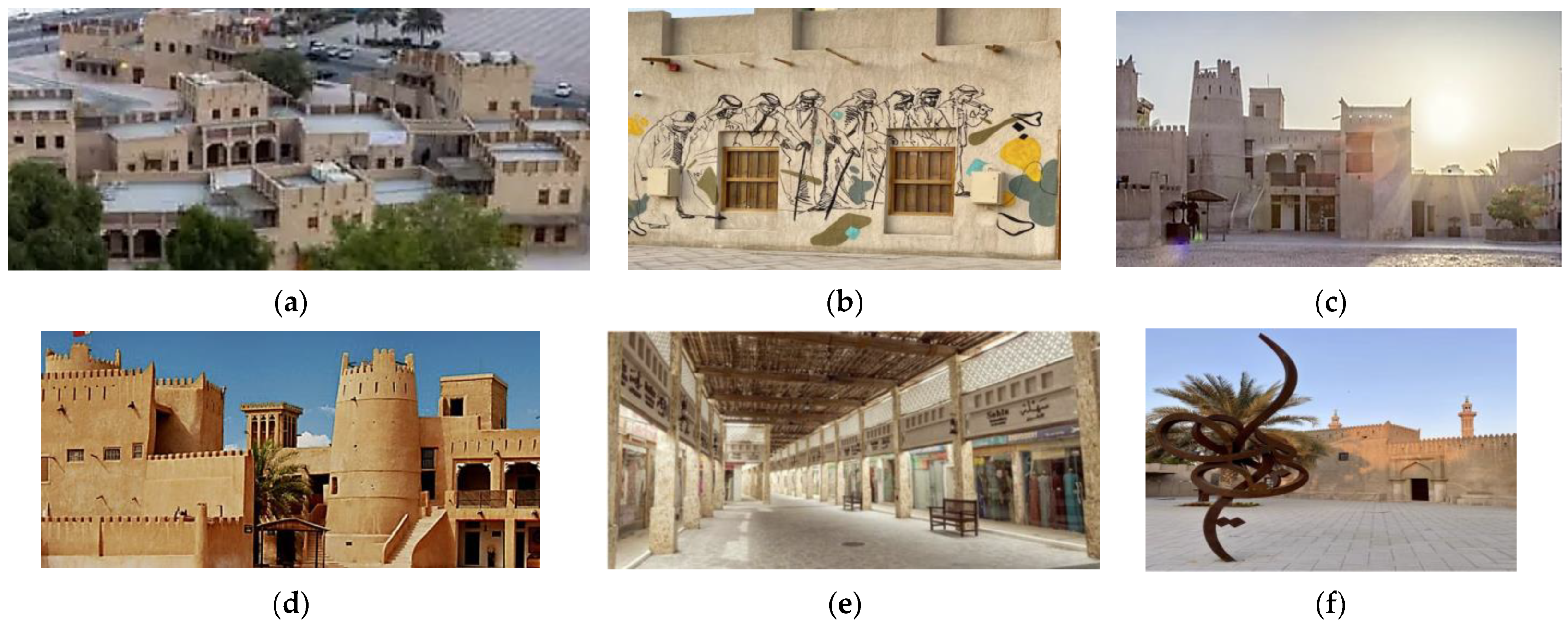
3.2. Research Software for the Environmental Analysis
3.3. Simulation Validation for the Environmental Analysis
4. Rehabilitation and Development of the Old District—Ajman Heritage Area
4.1. Proposal Outline for the Development of the Ajman Heritage Area
- Compacted urban pattern that provides shaded pathways and improves the thermal performance for the district;
- Public courtyards that provide shaded outdoor areas and a stack effect to improve the thermal conditions;
- Private courtyards that provide private outdoor areas with better thermal conditions;
- Barajeel (wind tower) that allows the cool air to enter the inner spaces and replace the hot air.
4.2. Stakeholders and the Development of the Ajman Heritage Area
5. Results and Discussion
- Public and in-building courtyards that improve the stack effect and increase the shaded area and lower the outdoor temperature;
- Compacted masses in the southern part of the district to create shade in relation to the sun path;
- Narrow windy pathways that create canyon breeze and improve the air movement;
- Barajeel (wind tower) that is added as a traditional symbol only, but due to its height it will create more shaded areas.
5.1. The Social Sustainability—Rehabilitated and Conserved the Ajman Heritage Area
5.2. The Economical Sustainability—Rehabilitated and Conserved the Ajman Heritage Area
5.3. The Environmental Sustainability—Rehabilitated and Conserved Ajman Heritage Area
5.3.1. Simulation and Analysis Dates, Conditions, Criteria and Variables
- Air temperature as a direct sign for the thermal performance for the urban configurations [74];
- Sky view factor that affects the shadow index and the sun exposure;
- Thermal comfort as predicted mean vote (PMV). Its values were predicted for outdoor thermal comfort. PMV calculations take into consideration the energy balance of users’ bodies within the created microclimates. ENVI-met estimates PMV using the ASHRAE scale, with +3 signifying extremely hot weather and −3 denoting extremely cold weather [45].Moreover, it was enhanced to include a larger scale for open-air temperatures that ranged from +4 (severe heat) to −4 (extreme cold) [75]. PMV is often associated with microclimate conditions such as wind speed, humidity, air temperature, and radiant temperature as outside impacts, along with other features of the human body including the users’ age, metabolism, and gender [75]. As a result, a variety of direct and indirect factors have been proven to affect the thermal comfort; nevertheless, Lai et al. [76] claimed that the air temperature has a significant influence on consumers’ thermal comfort.
5.3.2. Results of the Simulation
6. Conclusions
7. Study Limitations
Author Contributions
Funding
Data Availability Statement
Acknowledgments
Conflicts of Interest
References
- Hao, L.; Herrera-Avellanosa, D.; Del Pero, C.; Troi, A. What Are the Implications of Climate Change for Retrofitted Historic Buildings? A Literature Review. Sustainability 2020, 12, 7557. [Google Scholar] [CrossRef]
- Lucchi, E.; Buda, A. Urban green rating systems: Insights for balancing sustainable principles and heritage conservation for neighbourhood and cities renovation planning. Renew. Sustain. Energy Rev. 2022, 161, 112324. [Google Scholar] [CrossRef]
- Salameh, M.M.; Touqan, B.A.; Awad, J.; Salameh, M.M. Heritage conservation as a bridge to sustainability assessing thermal performance and the preservation of identity through heritage conservation in the Mediterranean city of Nablus. Ain Shams Eng. J. 2022, 13, 101553. [Google Scholar]
- Cantatore, E.; Fatiguso, F. An Energy-Resilient Retrofit Methodology to Climate Change for Historic Districts. Application in the Mediterranean Area. Sustainability 2021, 13, 1422. [Google Scholar] [CrossRef]
- Ulu, M.; Durmuş Arsan, Z. Retrofit Strategies for Energy Efficiency of Historic Urban Fabric in Mediterranean Climate. Atmosphere 2020, 11, 742. [Google Scholar] [CrossRef]
- Timur, B.; Başaran, T.; İpekoğlu, B. Thermal Retrofitting for Sustainable Use of Traditional Dwellings in Mediterranean Climate of Southwestern Anatolia. Energy Build. 2021, 256, 111712. [Google Scholar] [CrossRef]
- Paschoalin, R.; Isaacs, N. Holistic renovation of historic and heritage buildings: Comparing New Zealand and international scenarios. Int. J. Build. Pathol. Adapt. 2020, 39, 602–618. [Google Scholar] [CrossRef]
- Buda, A.; de Place Hansen, E.J.; Rieser, A.; Giancola, E.; Pracchi, V.N.; Mauri, S.; Marincioni, V.; Gori, V.; Fouseki, K.; Polo López, C.S.; et al. Conservation-Compatible Retrofit Solutions in Historic Buildings: An Integrated Approach. Sustainability 2021, 13, 2927. [Google Scholar] [CrossRef]
- Fernandes, J.; Dabaieh, M.; Mateus, R.; Bragança, L. The Influence of the Mediterranean Climate on Vernacular Architecture: A Comparative Analysis between the Vernacular Responsive Architecture of Southern Portugal and North of Egypt. In World Sustainable Buildings SB14. 2014. Available online: https://hdl.handle.net/1822/31403 (accessed on 8 January 2023).
- Al Tawayha Fajer Braganca, L.; Mateus, R. Contribution of the vernacular architecture to the sustainability: A comparative study between the contemporary areas and the old quarter of a Mediterranean city. Sustainability 2019, 11, 896. [Google Scholar] [CrossRef]
- Herrle, P.; Wegerhoff, E. (Eds.) Architecture and Identity; LIT Verlag Münster: Münster, Germany, 2008; Volume 9. [Google Scholar]
- Clair, P. Low-Energy Design in the United Arab Emirates. Building Design Principles. [Online] BEDP Environmental Design Guide. Available online: http://file:///F:/Low%20energy%20Design%20Guide.pdf (accessed on 8 January 2016).
- Katanbafnasab, M. Assessment of the Energy Impact of Using Building Integrated Photovoltaic and Electrochromic Glazing in Office Building in UAE. Engineering 2013, 5, 56–61. [Google Scholar] [CrossRef]
- Forouzandeh, A. Numerical modeling validation for the microclimate thermal condition of semi-closed courtyard spaces between buildings. Sustain. Cities Soc. 2018, 36, 327–345. [Google Scholar]
- Zhang, A.; Bokel, R.; van den Dobbelsteen, A.; Sun, Y.; Huang, Q.; Zhang, Q. The Effect of Geometry Parameters on Energy and Thermal Performance of School Buildings in Cold Climates of China. Sustainability 2017, 9, 1708. [Google Scholar]
- Du, X.; Bokel, R.; van den Dobbelsteen, A. Architectural spatial design strategies for summer microclimate control in buildings: A comparative case study of Chinese vernacular and modern houses. J. Asian Archit. Build. Eng. 2016, 15, 327–334. [Google Scholar] [CrossRef]
- Abanomi, W.; Jones, P. Passive cooling and energy conservation design strategies of school buildings in hot, arid region: Riyadh, Saudi Arabia. In Proceedings of the International Conference Passive and Low Energy Cooling for the Built Environment, Santorini, Greece, 19–21 May 2005. [Google Scholar]
- Tabesh, T.; Sertyesilisik, B. An Investigation into Energy Performance with the Integrated Usage of a Courtyard and Atrium. Buildings 2016, 6, 21. [Google Scholar] [CrossRef]
- Markus, B.; Malsiah, H.; Lim, Y.W.; Tanko, B.L. Examination of Courtyard Dimensions and Proportions In Universiti Teknologi Malaysia Buildings. Int. J. Real State Stud. 2017, 11. [Google Scholar]
- Soflaei, F.; Shokouhian, M.; Tabadkani, A.; Moslehi, H.; Berardi, U. A simulation-based model for courtyard housing design based on adaptive thermal comfort. J. Build. Eng. 2020, 31, 101335. [Google Scholar]
- Kirimtat, A.; Koyunbaba, B.K.; Chatzikonstantinou, I.; Sariyildiz, S. Review of simulation modeling for shading devices in buildings. Renew. Sustain. Energy Rev. 2016, 53, 23–49. [Google Scholar]
- Salameh, M.; Mushtaha, E.; El Khazindar, A. Improvement of thermal performance and predicted mean vote in city districts: A case in the United Arab Emirates. Ain Shams Eng. J. 2022, 14, 101999. [Google Scholar] [CrossRef]
- Tawayha, F.; Bragança, L.; Mateus, R. Ecology and environment, an urban scale comparative study between contemporary and vernacular city of Nablus. In Proceedings of the SBE16 Brazil & Portugal—Sustainable Urban Communities towards a Nearly Zero Impact Built Environment, Vitoria, Brazil, 7–9 September 2016; Universidade Federal Do Espírito Santo (UFES): Vitoria, Brazil, 2016; Volume 3, pp. 1589–1598. [Google Scholar] [CrossRef]
- Hausladen, G.; Liedl, P.; Saldanha, M. Building to Suit the Climate: A Handbook; Walter de Gruyter: Berlin, Germany, 2012. [Google Scholar]
- Perdikis, P. Cool Roofs Benefits: Introduction. [Online] Slideshare.net. 2015. Available online: http://www.slideshare.net/ProkopisPerdikis/cool-roofs-benefits-introduction (accessed on 2 September 2022).
- Cantón, M.; Ganem, C.; Barea, G.; Llano, J. Courtyards as a passive strategy in semi dry areas. Assessment of summer energy and thermal conditions in a refurbished school building. Renew. Energy 2014, 69, 437–446. [Google Scholar]
- Al-Masri, N.; Abu-Hijleh, B. Courtyard housing in midrise buildings: An environmental assessment in hot-arid climate. Renew. Sustain. Energy Rev. 2012, 16, 1892–1898. [Google Scholar]
- Afshari, A.; Nikolopoulou, C.; Martin, M. Life-Cycle Analysis of Building Retrofits at the Urban Scale—A Case Study in United Arab Emirates. Sustainability 2014, 6, 453–473. [Google Scholar] [CrossRef]
- Biqaraz, B.; Fayaz, R.; Haghighaat Naeeni, G. A comparison of outdoor thermal comfort in historical and contemporary urban fabrics of Lar City. Urban Clim. 2019, 27, 212–226. [Google Scholar] [CrossRef]
- UAE History, History—The Official Portal of the UAE Government. 2022. Available online: https://u.ae/en/about-the-uae/history (accessed on 31 December 2022).
- Al-Sallal, K.A.; AbouElhamd, A.R.; Dalmouk, M.B. UAE heritage buildings converted into museums: Evaluation of daylighting effectiveness and potential risks on artifacts and visual comfort. Energy Build. 2018, 176, 333–359. [Google Scholar] [CrossRef]
- Al Ahmadiya School. Building with Class. 2022. Available online: http://jhsite.com/interactives/School/School.html (accessed on 1 January 2023).
- Heritage Research—Ahmdiya School by Mona Abou Fayad—Issuu. 2020. Available online: https://issuu.com/monaaboufayad/docs/ahmdiya.pptx (accessed on 31 December 2022).
- Picton, O.J. Usage of the concept of culture and heritage in the United Arab Emirates—An analysis of Sharjah heritage area. J. Herit. Tour. 2010, 5, 69–84. [Google Scholar] [CrossRef]
- Prager, L. Displaying origins: Heritage museums, cultural festivals, and national imageries in the UAE. Horiz. Humanit. Soc. Sci. Int. Refereed J. 2015, 1, 22–46. [Google Scholar] [CrossRef]
- Detommaso, M.; Gagliano, A.; Marletta, L.; Nocera, F. Sustainable urban greening and cooling strategies for thermal comfort at pedestrian level. Sustainability 2021, 13, 3138. [Google Scholar] [CrossRef]
- Bueno, B.; Roth, M.; Norford, L.; Li, R. Computationally efficient prediction of canopy level urban air temperature at the neighbourhood scale. Urban Clim. 2014, 9, 35–53. [Google Scholar]
- Nesticò, A.; Passaro, R.; Maselli, G.; Somma, P. Multi-criteria methods for the optimal localization of urban green areas. J. Clean. Prod. 2022, 374, 133690. [Google Scholar] [CrossRef]
- Emiratesvoyage.com. Maps of UAE. [Online]. 2021. Available online: http://emiratesvoyage.com/uae-maps/ (accessed on 26 November 2022).
- Ajman Heritage Development. “Heritage Quarter” Project in Ajman, to Be Completed Next June. [Online] Al Bayan. 2022. Available online: https://www.albayan.ae/across-the-uae/news-and-reports/2020-02-10-1.3775020 (accessed on 27 February 2022).
- Air Temperature 2009. 2022. The Average Monthly Air Temperature throughout the Year in the UAE—Google Search. [online] Google.com. Available online: https://www.google.com/search?q=a-+The+average+monthly+air+temperature+throughout+the+year+in+the+UAE&rlz=1C1GCEU_enAE929AE929&source=lnms&tbm=isch&sa=X&ved=2ahUKEwiJ3-Pr-Mj1AhW1AmMBHS8VBT0Q_AUoAXoECAEQAw&biw=1536&bih=849&dpr=2.5#imgrc=IRO06uCF4YaV-M (accessed on 23 January 2022).
- Iowa State University Iowa Environmental Mesonet. IEM:: Site Wind Roses, Iowa Environmental Mesonet. 2023. Available online: https://mesonet.agron.iastate.edu/sites/windrose.phtml?station=QGX&network=AE__ASOS (accessed on 30 January 2023).
- Ajman. Complete Guide to the Ajman Heritage District—Mybayut, A Blog about Homes, Trends, Tips & Life in the UAE MyBayut. 2022. Available online: https://www.bayut.com/mybayut/ajman-heritage-district/ (accessed on 29 December 2022).
- Ajman Municipality. Ajman—Ajman Municipality & Planning Department. 2022. Available online: https://www.am.gov.ae/ajman/ (accessed on 1 January 2023).
- Huttner, S. Further Development and Application of the 3D Microclimate Simulation ENVI-Met. Ph.D. Thesis, Johannes Gutenberg-Universitat of Mainz, Mainz, Germany, 2012. [Google Scholar]
- Lee, H.; Mayer, H.; Chen, L. Contribution of trees and grasslands to the mitigation of human heat stress in a residential district of Freiburg, Southwest Germany. Landsc. Urban Plan. 2016, 148, 37–50. [Google Scholar]
- Salata, F.; Golasi, I.; de Lieto Vollaro, R.; de Lieto Vollaro, A. Urban microclimate and outdoor thermal comfort. A proper procedure to fit ENVI-met simulation outputs to experimental data. Sustain. Cities Soc. 2016, 26, 318–343. [Google Scholar]
- Paas, B.; Schneider, C. A comparison of model performance between ENVI-met and Austal2000 for particulate matter. Atmos. Environ. 2016, 145, 392–404. [Google Scholar]
- Simon, H. Modeling Urban Microclimate: Development, Implementation and Evaluation of New and Improved Calculation Methods for the Urban Microclimate Model ENVI-Met. Ph.D. Dissertation, der Johannes Gutenberg-Universität Mainz, Mainz, Germany, 2016. [Google Scholar]
- Extech 45170. 4-in-1 Environmental Meter Extech Instruments. Extech.com. 2021. Available online: http://www.extech.com/products/45170 (accessed on 3 September 2021).
- Salameh, M.; Touqan, B. Traditional Passive Design Solutions as a Key Factor for Sustainable Modern Urban Designs in the Hot, Arid Climate of the United Arab Emirates. Buildings 2022, 12, 1811. [Google Scholar] [CrossRef]
- Ghaffarianhoseini, A.; Berardi, U.; Ghaffarianhoseini, A. Thermal performance characteristics of unshaded courtyards in hot and humid climates. Build. Environ. 2015, 87, 154–168. [Google Scholar]
- Taleghani, M.; Tenpierik, M.; van den Dobbelsteen, A. Energy performance and thermal comfort of courtyard/atrium dwellings in the Netherlands in the light of climate change. Renew. Energy 2014, 63, 486–497. [Google Scholar]
- Ajman Fort, Wikipedia. Wikimedia Foundation. 2022. Available online: https://en.wikipedia.org/wiki/Ajman_Fort (accessed on 20 November 2022).
- Al Fahidi Area Google Earth. 2022. Available online: https://earth.google.com/web/@25.2638237,55.2998241,5.37287633a,0d,90y,347.03457855h,71.47468455t,0r/data=IjAKLEFGMVFpcE85QzNPWnZWemp5STNISk9FRTlmWmpXWXF0NW9aZlN3SURyTDhuEAU (accessed on 12 November 2022).
- Nwachukwu, C.V.; Udeaja, C.; Chileshe, N.; Okere, C.E. The critical success factors for stakeholder management in the restoration of built heritage assets in the UK. Int. J. Build. Pathol. Adapt. 2017, 35, 304–331. [Google Scholar]
- UNESCO World Heritage Centre—Compendium. 2022. Available online: https://whc.unesco.org/en/compendium/action=list&id_faq_themes=1360 (accessed on 28 December 2022).
- Teshnehdel, S.; Mirnezami, S.; Saber, A.; Pourzangbar, A.; Olabi, A.G. Data-driven and numerical approaches to predict thermal comfort in traditional courtyards. Sustain. Energy Technol. Assess. 2020, 37, 100569. [Google Scholar]
- Sahebzadeh, S.; Heidari, A.; Kamelnia, H.; Baghbani, A. Sustainability features of Iran’s vernacular architecture: A comparative study between the architecture of hot–arid and hot–arid–windy regions. Sustainability 2017, 9, 749. [Google Scholar] [CrossRef]
- Ajman Cultural District. Ajman Cultural District—World Buildings Directory Architecture Search Engine. 2022. Available online: https://www.worldbuildingsdirectory.com/entries/ajman-cultural-district/ (accessed on 20 November 2022).
- Ajman Identity. Ajman Vows to Excel by Embracing a New Identity, The Free Library. 2022. Available online: https://www.thefreelibrary.com/Ajman+vows+to+excel+by+embracing+a+new+identity-a0227328859 (accessed on 19 November 2022).
- Zancheti, S.M.; Hidaka, L.T.F. Measuring urban heritage conservation: Theory and structure (part 1). J. Cult. Herit. Manag. Sustain. Dev. 2011, 1, 96–108. [Google Scholar]
- Elshater, A. The predicament of post-displacement amidst historical sites: A design-based correlation between people and place. Herit. Soc. 2021, 12, 85–115. [Google Scholar]
- Ashworth, G.J. From history to heritage—From heritage to identity. In Building a New Heritage: Tourism, Culture and Identity in the New Europe; Routledge: London, UK, 2013; pp. 13–30. [Google Scholar]
- Uzzell, D. Creating place identity through heritage interpretation. Int. J. Herit. Stud. 2007, 1, 219–228. [Google Scholar] [CrossRef]
- Di Pietro, L.; Guglielmetti Mugion, R.; Renzi, M. Heritage and identity: Technology, values and visitor experiences. J. Herit. Tour. 2017, 13, 97–103. [Google Scholar] [CrossRef]
- Al Murabba Arts—Ajman Museum (Preparation) Full HD, YouTube. 2021. Available online: https://www.youtube.com/watch?v=aD4M6S62W3U (accessed on 20 November 2022).
- Al-Qeeq, F.S. A comprehensive approach to incorporate architectural heritage of Gaza old city into contemporary urban fabric. Lonaard J. 2011, 1. [Google Scholar]
- Eldiasty, A.; Hegazi, Y.S.; El-Khouly, T. Using space syntax and TOPSIS to evaluate the conservation of urban heritage sites for possible UNESCO listing the case study of the historic centre of Rosetta, Egypt. Ain Shams Eng. J. 2021, 12, 4233–4245. [Google Scholar] [CrossRef]
- Ajman CP Launches AED102 MN Second Package of Infrastructure Projects. 2022. Available online: http://wam.ae/en/details/1395303066305 (accessed on 20 November 2022).
- Traditional Google Search. Google. 2022. Available online: https://www.google.com/search?q=traditional%2Bcrafts%2Bin%2Bajman&rlz=1C1GCEU_enAE929AE929&sxsrf=ALiCzsacyaTupgm5AEey9dGdGr4Q0pAIFg%3A1668895272789&source=lnms&tbm=isch&sa=X&ved=2ahUKEwjGipuvn7v7AhUEiv0HHUzaCu8Q_AUoAXoECAEQAw&biw=1536&bih=760&dpr=2.5 (accessed on 20 November 2022).
- Watt, A.A. Ajman Heritage District—Enjoy Wonderful Murals and Cafes, Glimpses of UAE. 2022. Available online: https://glimpsesofuae.com/ajman-heritage-district-street-art/ (accessed on 20 November 2022).
- Ahmed, G. Cultural Dimensions of Economic Development: A Case of UAE. Theor. Econ. Lett. 2018, 8, 2479–2496. [Google Scholar] [CrossRef]
- Feroz, S.M. Achieving Thermal Comfort by Applying Passive Cooling Strategies to Courtyard Houses in Dubai (UAE). Master’s Dissertation, The British University in Dubai (BUiD), Dubai, United Arab Emirates, 2015. [Google Scholar]
- PMV-ENVI-Met. A Holistic Microclimate Model. [Online]. 2021. Available online: https://envi-met.info/doku.php?id=apps:biomet_pmv (accessed on 2 September 2021).
- Lai, D.; Lian, Z.; Liu, W.; Guo, C.; Liu, W.; Liu, K.; Chen, Q. A comprehensive review of thermal comfort studies in urban open spaces. Sci. Total Environ. 2020, 742, 140092. [Google Scholar]
- Khalfan, M.; Sharples, S. Thermal Comfort Analysis for the First Passivhaus Project in QATAR. In Proceedings of the SBE16 Proceedings, Dubai, United Arab Emirates, 17–19 January 2016. [Google Scholar]
- Nikiforova, T.; Savytskyi, M.; Limam, K.; Bosschaerts, W.; Belarbi, R. ScienceDirect Methods and results of experimental researches of thermal conductivity of soils. Energy Procedia 2013, 42, 775–783. [Google Scholar] [CrossRef]
- Oktay, H.; Argunhan, Z.; Yumrutas, R. An Investigation of the Influence of Thermophysical Properties of Multilayer Walls and Roofs on the Dynamic Thermal Characteristics. Mugla J. Sci. Technol. 2016, 2, 48–54. [Google Scholar] [CrossRef]
- Kodesová, R.; Vlasáková, M.; Fér, M.; Teplá, D.; Jakšík, O.; Neuberger, P.; Adamovský, R. Thermal properties of representative soils of the Czech Republic. Soil Water Res. 2013, 8, 141–150. [Google Scholar] [CrossRef]
- Kotak, Y.M.S.; Gul, T.M.; Ivanova, S.M. Investigating the Impact of Ground Albedo on the Performance of PV Systems (1), in London: CIBSE Technical Symposium. 2015. Available online: https://www.researchgate.net/publication/275956502_Investigating_the_Impact_of_Ground_Albedo_on_the_Performance_of_PV_Systems/citations (accessed on 30 January 2023).
- An, N.; Hemmati, S.; Cui, Y. Numerical analysis of soil volumetric water content and temperature variations in an embankment due to soil-atmosphere interaction. Comput. Geotech. 2017, 83, 40–51. [Google Scholar]
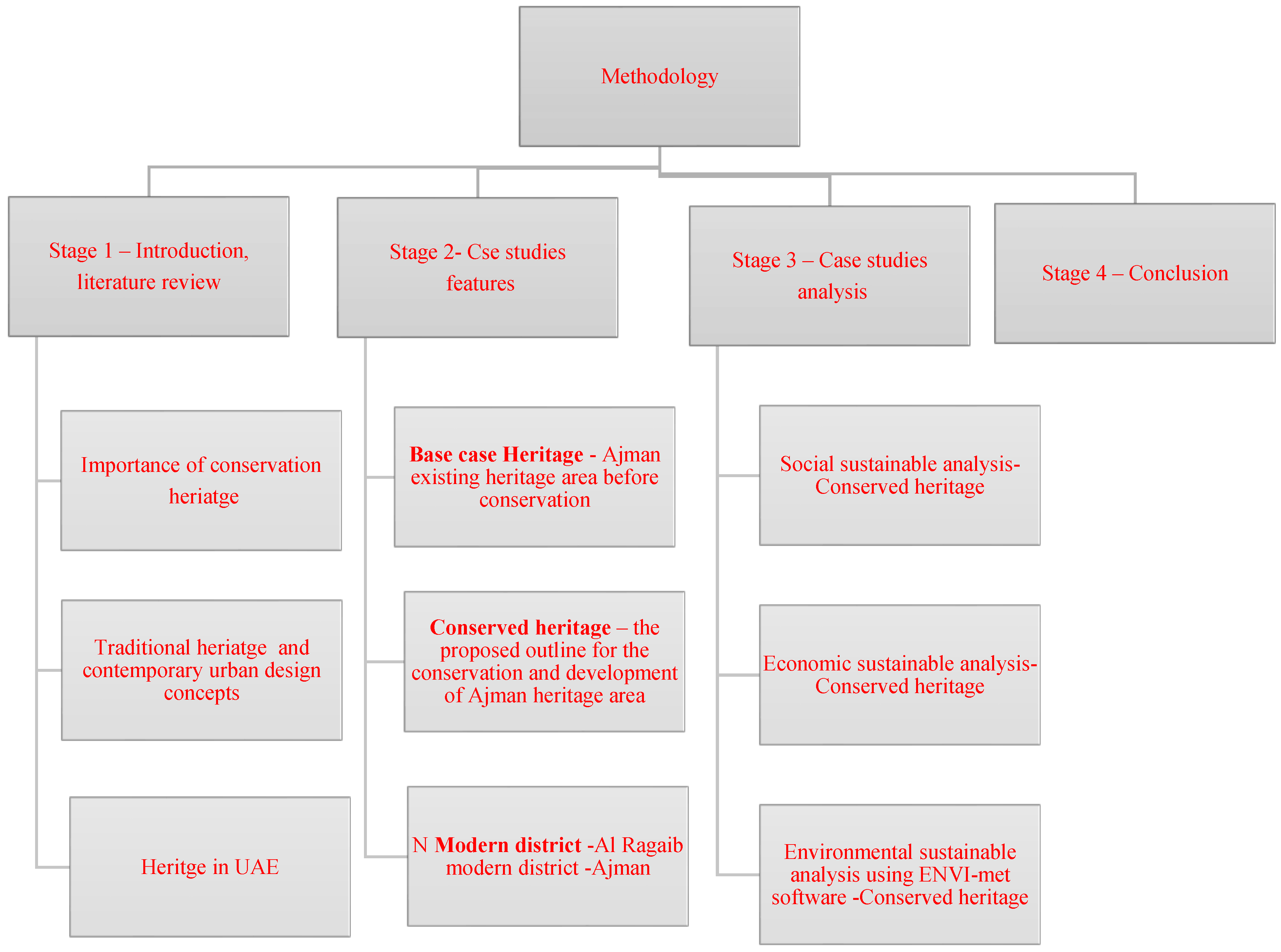

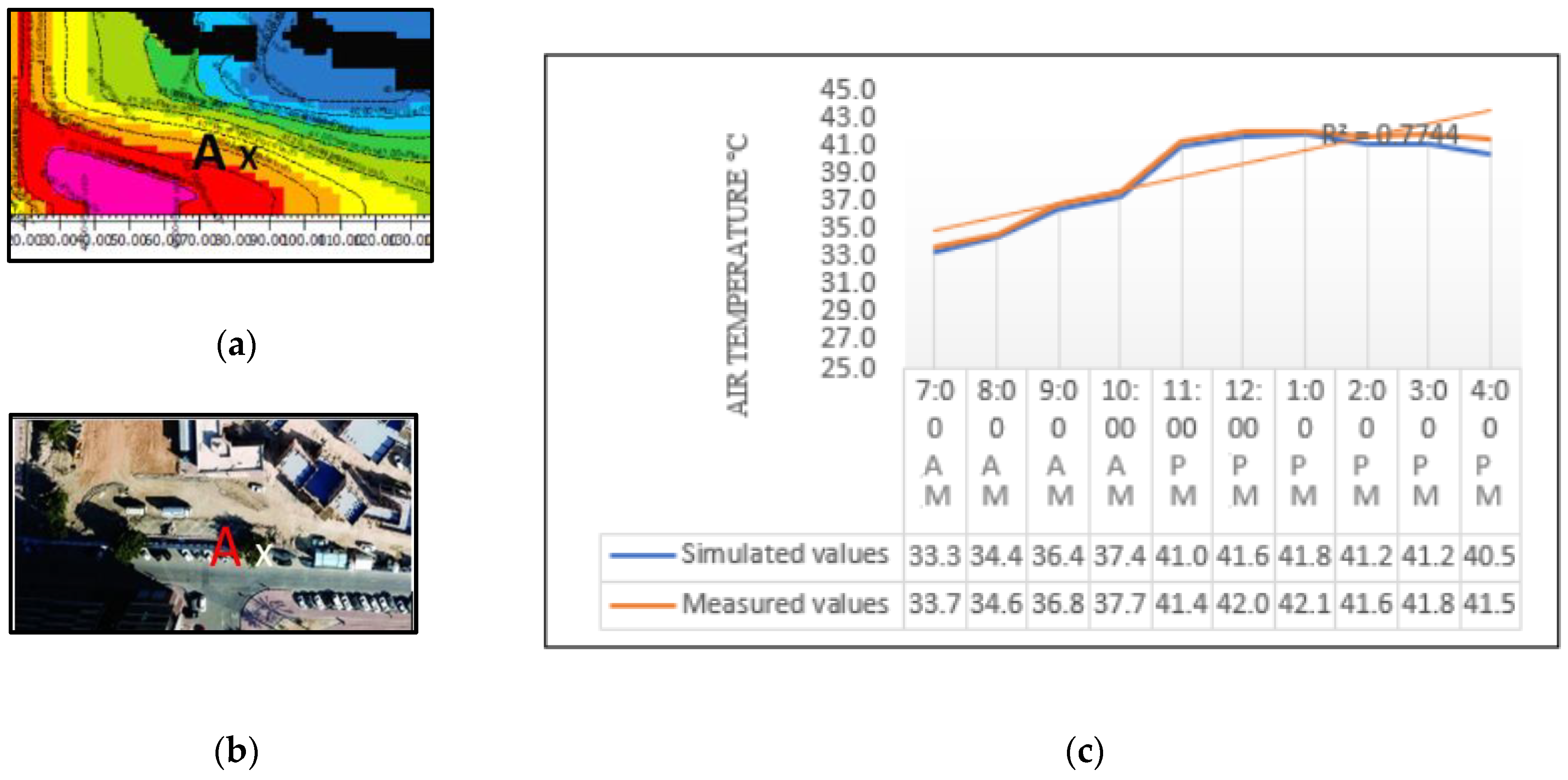
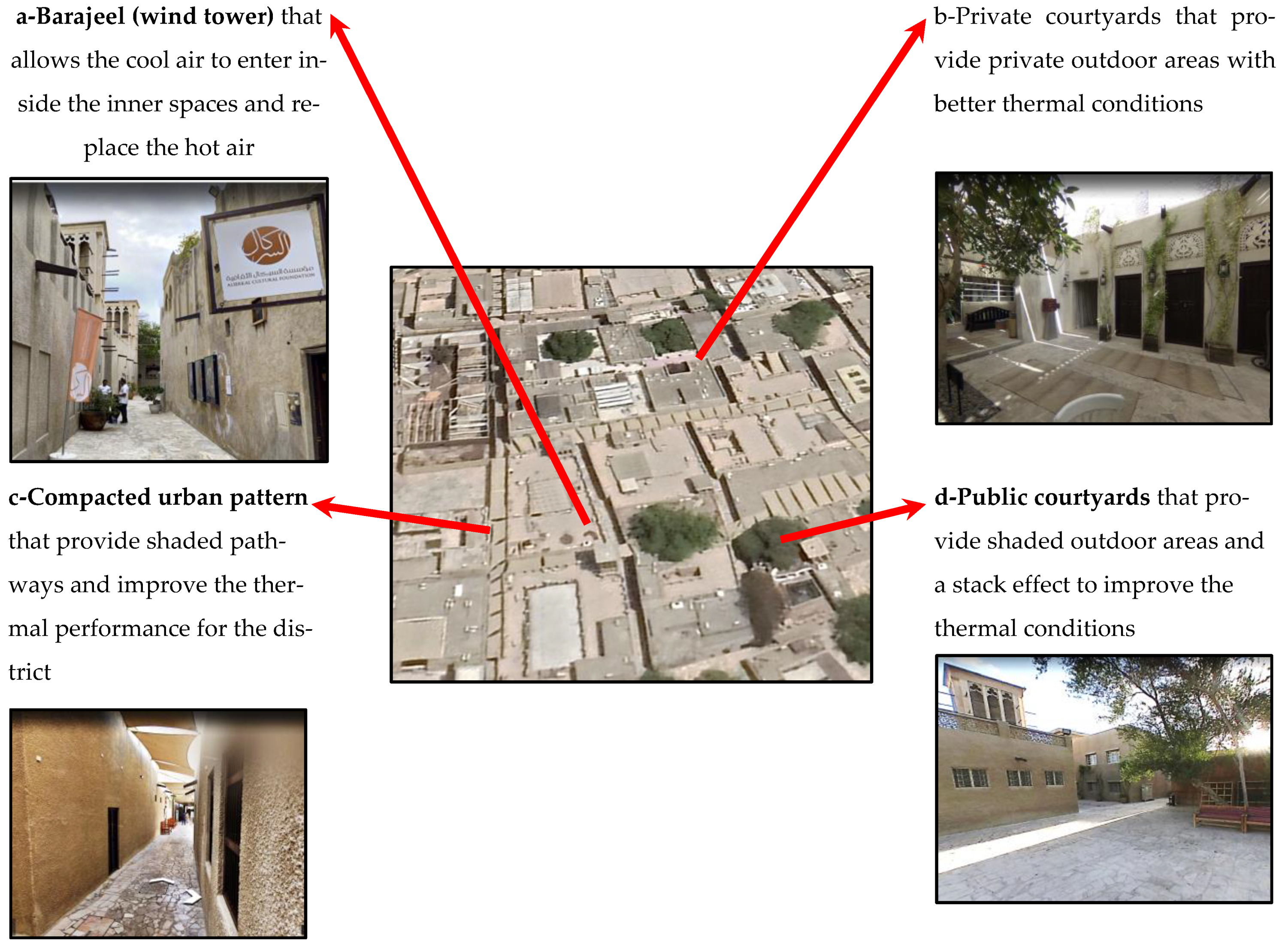
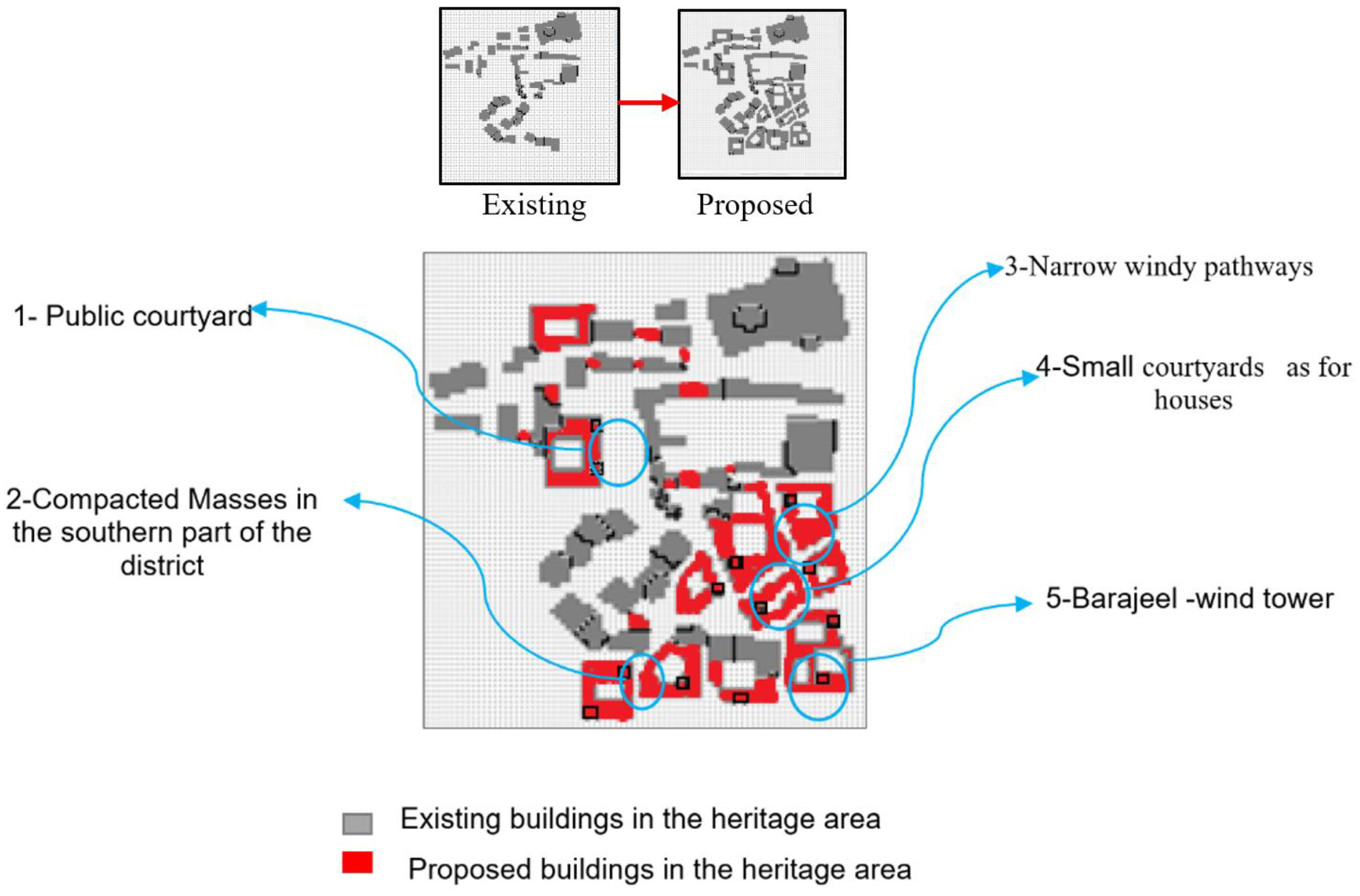
| Passive Design Approaches | Notes | References |
|---|---|---|
Orientation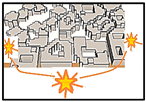 | The position of the walls, masses and openings of the buildings according to the sun path affects the expanse of solar gain for the buildings. | [14,15] |
Vegetation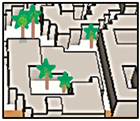 | The green elements between the buildings can improve the thermal conditions for the outdoor areas by increasing the shaded areas and by the evaporative cooling technique. | [16,17] |
Courtyard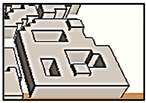 | The courtyards create shade and improves the ventilation and air circulation due to the stack effect. | [18,19,20] |
Shading devices and projected masses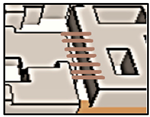 | The difference in heights and the shading devices increase the shaded areas and reduce the air temperature. | [21,22] |
Compacted Urban layout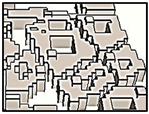 | The organic and semi-attached masses in the vernacular and traditional urban layout increase the shaded zones and reduce the area of the walls that is exposed to the direct solar radiation, therefore decreasing the heat gain. | [23] |
| Added Passive Approaches and Elements | Description and Location | Social Advantage | Economical Advantage | Environmental Advantage | Reference |
|---|---|---|---|---|---|
| 1—Public and private courtyards | Courtyards are created between the buildings and within the new masses of the reconstructed heritage | The public courtyards improve identity, sense of belonging | Gathering area for the different entertaining and cultural activities | Stack effect increases the shaded area and lowers the outdoor temperature | [58] |
| 2—Compacted Masses in the southern part of the district | It was added according to the arrangement of the masses, especially in the southern part of the heritage district to increase the shade during the sun passage from east to west | Copying the old urban layout for the heritage area and reflects the traditional atmosphere | These masses can be used for different tourism activities | Increase the shaded area because of low sky view factor | [10] |
| 3—Narrow windy pathways | They were formed between the masses as narrow streets | Copying the old streets in the heritage area | Reflects the traditional spirit of old streets as attraction elements for tourists | Creates canyon breeze that improves the air movement | [59] |
| 4—Barajeel wind towers | They were integrated above some buildings in the expanded area | Heritage icon | Attraction point to the heritage area as a public heritage icon | Due to their height they will create more shaded area on the buildings and in the streets | [22] |
| Case studies main features | Base case heritage—Ajman existing heritage area before conservation and expansion | Conserved heritage—the proposed outline for the conservation and development of the Ajman heritage area | Modern district—Al Ragaib modern district |
| Urban layout |  | 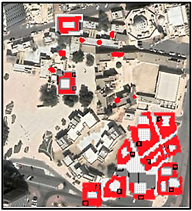 | 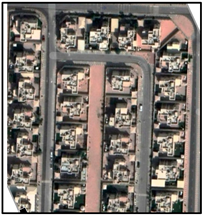 |
| Built-up units | 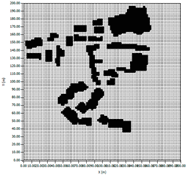 | 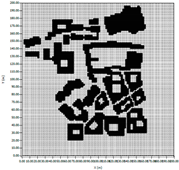 | 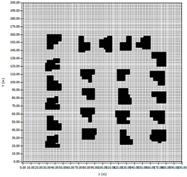 |
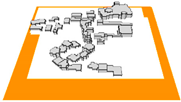 | 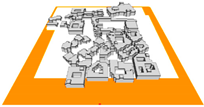 |  | |
| Plot area | 200 × 200 = 40,000 m2 | 200 × 200 = 40,000 m2 | 200 × 200 = 40,000 m2 |
| Built-up area | Around 11,500 m2 | 22,000 m2 | Around 11,500 m2 |
| Urban layout | Organic layout | Organic layout | Grid pattern layout |
| Streets width | Windy and narrow | Windy and narrow | Straight and Wide |
| Urban and street geometry |  |  |  |
| Height of the buildings | 4 m, 8 m and (Brajeel) 12 m | 4 m, 8 m and (Brajeel) 12 m | 8 m |
| Buildings type | Semi-attached houses | Semi-attached houses | Residential-detached houses |
| 3D geometry |  |  |  |
| (a) Case studies model geometry and conditions | |||||
| Model geometry and conditions | Details | ||||
| Cell size | 2 m × 2 m × 2 m (dx, dy, dz); | ||||
| Grid sum | 100 × 100 × 25 (x, y, z) | ||||
| Total time run for each simulation | 24 h | ||||
| Climate | Ajman -UAE | ||||
| Construction materials | Moderate wall insulation and roof insulation. | ||||
| (b) Unified Materials Thermal Properties for All the Cases | |||||
| Thermophysical Properties | Thermal Conductivity (W/m K) | Density (kg/m3) | Specific Heat (kJ/kg K) | Albedo | |
| Concrete pavement light | 1.37 | 2076 | 0.88 | 0.25–0.70 | |
| Default wall- Moderate insulation | 1.4 | 2350 | 0.88 | 0.25–0.70 | |
| References | [78,79] | [78,79] | [79,80] | [81,82] | |
| Case Studies | Base Case Heritage District  | Conserved Heritage District  | Modern District  |
|---|---|---|---|
a—Potential air temperature °C | 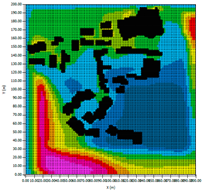 | 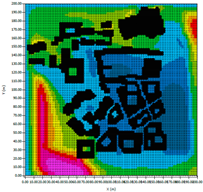 | 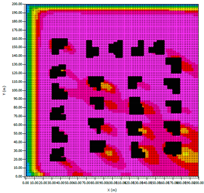 |
| b—Histogram- Potential Air temperature distribution %N | 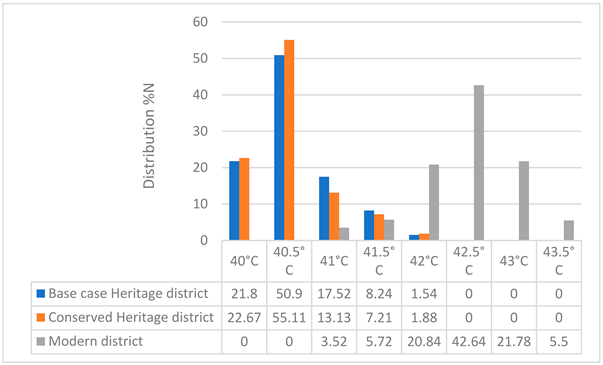 | ||
c—Sky view factor | 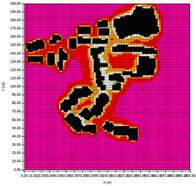 | 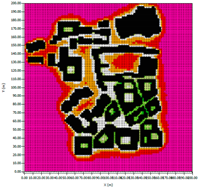 |  |
| d—Histogram—Sky view factor | 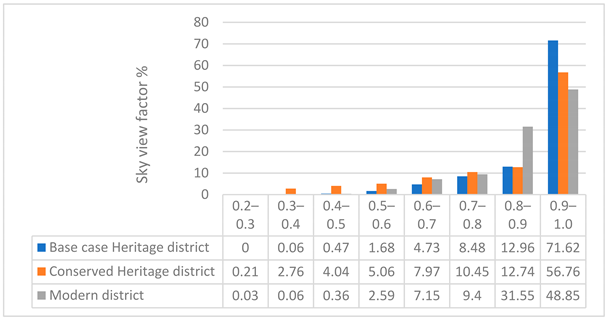 | ||
| Case Studies | Base case Heritage District | Conserved Heritage District | Modern District |
|---|---|---|---|
a—PMV | 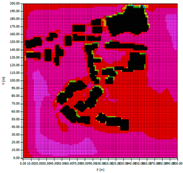 |  | 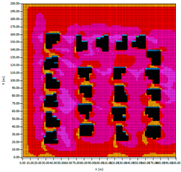 |
| b—Histogram- PMV distribution %N |  |  | 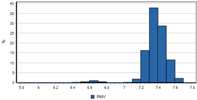 |
c—Mean Radiant temperature | 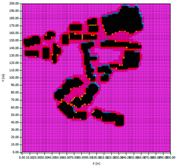 |  | 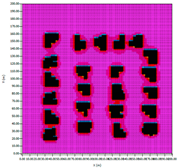 |
| d—Mean Radiant temperature | 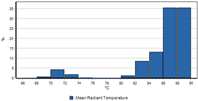 |  |  |
e—Relative Humidity  |  | 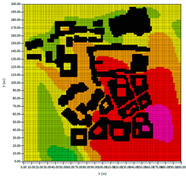 | 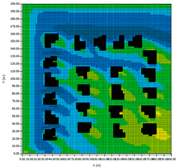 |
| f—Histogram- Relative Humidity |  |  |  |
g—Wind speed | 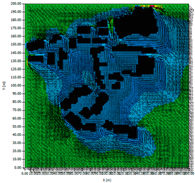 | 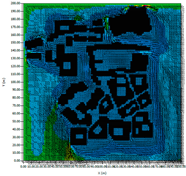 | 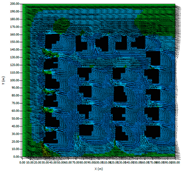 |
| h—Histogram- wind speed |  |  |  |
Disclaimer/Publisher’s Note: The statements, opinions and data contained in all publications are solely those of the individual author(s) and contributor(s) and not of MDPI and/or the editor(s). MDPI and/or the editor(s) disclaim responsibility for any injury to people or property resulting from any ideas, methods, instructions or products referred to in the content. |
© 2023 by the authors. Licensee MDPI, Basel, Switzerland. This article is an open access article distributed under the terms and conditions of the Creative Commons Attribution (CC BY) license (https://creativecommons.org/licenses/by/4.0/).
Share and Cite
Salameh, M.; Touqan, B. From Heritage to Sustainability: The Future of the Past in the Hot Arid Climate of the UAE. Buildings 2023, 13, 418. https://doi.org/10.3390/buildings13020418
Salameh M, Touqan B. From Heritage to Sustainability: The Future of the Past in the Hot Arid Climate of the UAE. Buildings. 2023; 13(2):418. https://doi.org/10.3390/buildings13020418
Chicago/Turabian StyleSalameh, Muna, and Basim Touqan. 2023. "From Heritage to Sustainability: The Future of the Past in the Hot Arid Climate of the UAE" Buildings 13, no. 2: 418. https://doi.org/10.3390/buildings13020418
APA StyleSalameh, M., & Touqan, B. (2023). From Heritage to Sustainability: The Future of the Past in the Hot Arid Climate of the UAE. Buildings, 13(2), 418. https://doi.org/10.3390/buildings13020418







